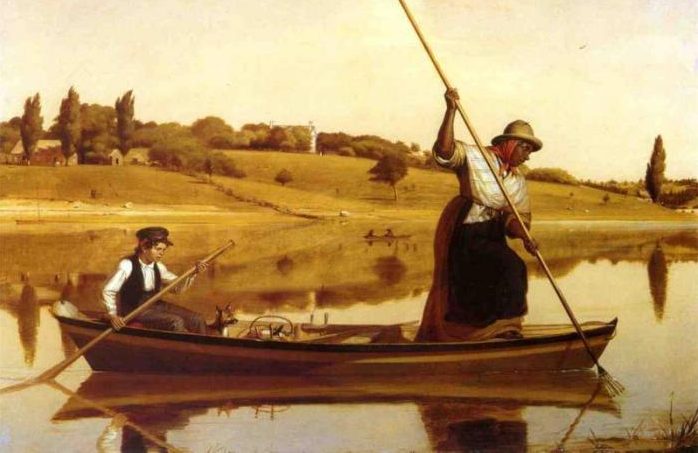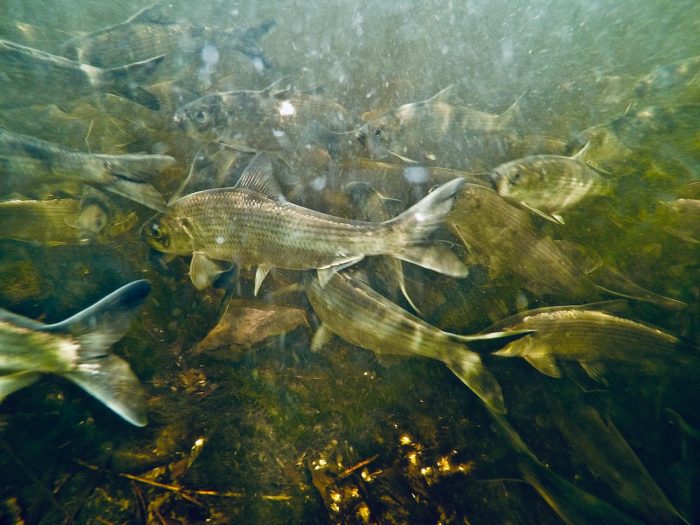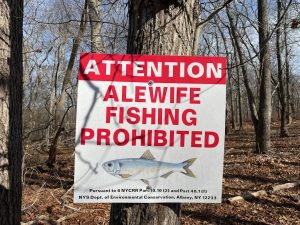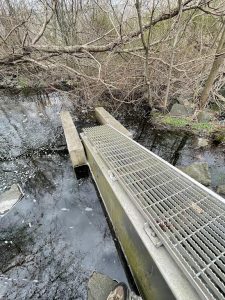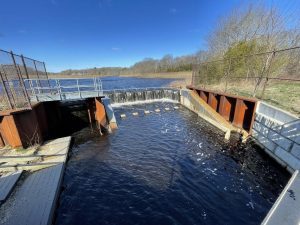By John L. Turner
This is part two of a two-part series on a remarkable pair of fish.
The life cycle of the American Eel is a bit more complicated than river herring and consists of six stages: egg, larvae, glass eel, elver, yellow eel, and silver eel.
Mature adults reproduce just once in their lifetime with all the eels emanating from the East Coast unerringly migrating to the Sargasso Sea where mass spawning takes place. (The Sargasso Sea, situated south of Bermuda, has no land borders but is distinct by being bounded by four strong ocean currents, including the Gulf Stream, resulting in quiet waters entrained within the gyre; here masses of sargassum weed abound giving shelter to many marine species including hatchling sea turtles).
Shortly after spawning here the adult eels die. A grown eel releases as many as several million eggs and they hatch within a week. At first the leptocephali don’t look eel-like, being transparent and flattened, described as looking like a willow leaf; they are carried north by the currents, including most notably, the Gulf Stream.
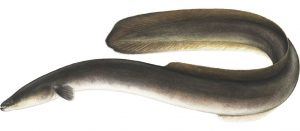
After about half a year they metamorphose into “glass eels,” still transparent but shaped like baby eels, and this is the stage, along with the slightly pigmented elver stage, that arrives at the mouths of Long Island’s streams. They wriggle their way up vertical faces and over wet land to make their way into freshwater ponds and lakes (although some spend their adult lives in brackish waters of Long Island’s estuaries).
While living for decades in ponds and lakes they move through a few more color stages, including yellow and silver eels. Here they become fully integrated members of the local food web, feeding on a variety of different aquatic prey while being preyed upon by many other animals including ospreys and bald eagles (stay tuned: June’s “Nature Matters” column!).
Eels are also food for humans (remember one of Long Island’s most famous paintings — William Sidney Mount’s 1845 “Eel Spearing at Setauket”?). Eventually some internal trigger “tells” these decades-old fish to head to the ocean and back to the Sargasso Sea to create a new generation of eels. To assist them in their long journey their bodies change a little — their eyes enlarge as do their pectoral fins.
Eel are managed by the Atlantic States Marine Fisheries Commission (ASMFC), beginning in 2006 with the first species management plan. The Commission sets harvest quotas for all age classes of eels including those to be used as bait and for direct consumption. The news has not been good over the past several decades with eel abundance on the decline and ASMFC currently classifies the eel stock as “depleted.”
Ways to increase abundance? Reduce all causes of eel mortality, especially among younger animals, among adults trying to navigate the perils of turbines at hydroelectric dams and increase opportunities for eels to migrate to freshwater areas where they can survive, becoming mature adults through time.
The Seatuck Environmental Association has been at the forefront of documenting the migratory occurrences of Long Island’s alewives and eels through its signature river herring and eel surveys and has, for decades, been working to protect existing runs while facilitating others. If you want to participate in trying to find new sites of alewife runs or eel migration or document more completely whats’s happening at existing sites, go to Seatuck’s webpage.
In pre-colonial times, before the advent of dams and other obstructions, many, if not all, of Long Island’s streams and rivers likely teemed in Spring with alewives and eels. They, in turn, provided nourishment to many species of wildlife from otters to ospreys to eagles. However, the Long Island of today is a very different place, with so many ecological threads severed or frayed. The reduced abundance of these fish illustrate the pervasive loss of ecological connectivity that has occurred on Long Island in the past few centuries. The good news? Many individuals, organizations, and governmental agencies are working to enhance connectivity here – to reconnect severed ecological threads – through the installation of additional ladders and passageways, and better yet, the removal of more dams, all steps to give these remarkable animals a chance to recover and perhaps even prosper.
I hope you make their acquaintance.
A resident of Setauket, John Turner is conservation chair of the Four Harbors Audubon Society, author of “Exploring the Other Island: A Seasonal Nature Guide to Long Island” and president of Alula Birding & Natural History Tours.

